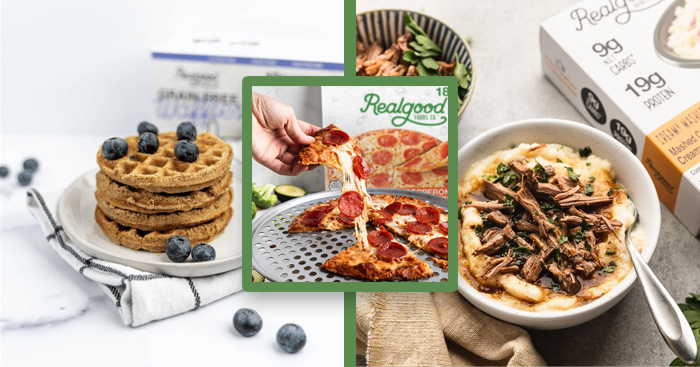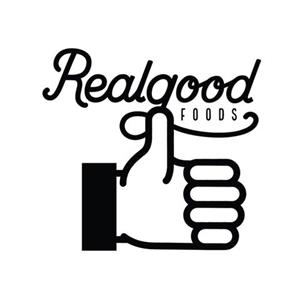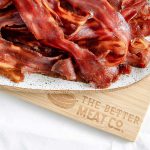Real Good Foods Goes Public, Sees Future in Entrees and Breakfast

On Friday better-for-you frozen food brand The Real Good Food Company (TRGFC) began trading on the Nasdaq under the ticker RGF. The company’s plans for long term growth include increasing its distribution, continuing to cultivate a loyal fan base, and expanding the product portfolio, according to executive chairman Bryan Freeman.
The company priced its shares at $12, below its expected pricing of $14 to $16 per share. As of today, the company’s stock price was roughly $9 a share.
Why Go Public?
According to Freeman, the IPO was “a natural next step” for TRGFC, which produces frozen pizzas, entrees and breakfast options marketed as high in protein and low in net carbs and sugar. Over the last two years, the company has brought on a management team with decades of experience running public corporations, Freeman said, and that “enjoy[s] the rigor of quarterly reporting.”
The company could have taken in more venture capital — its backers include Strand Equity — or sought acquisition by a larger company, he added, but ultimately both of those options would have drawbacks in achieving long-term growth. Finding a SPAC to merge with was also not of interest, with Freeman noting that “typically [these companies] do not have a broad institutional investor base.”
“If you really think you have something capable of going all the way and becoming a billion dollar business, [an IPO] is the right path,” Freeman said.
What’s the opportunity?
The frozen category has undergone a renaissance of sorts, Freeman said, with health and wellness brands within the frozen category reporting sales in “high double digits”. In addition, there’s been increased consumer interest in healthy eating: Over 50% of consumers are trying to reduce their carbohydrate intake, while 40% are suffering from obesity and close to a third have diabetes or are pre-diabetic, he said.

Despite that, Freeman noted that total health and wellness within frozen food is still trailing the rest of the store, roughly “half the size of health and wellness in the perimeter.” The reason for this disconnect is two fold, Freeman believes. First, many of the items that emphasize health claims cannot stand up when compared to the taste and texture of the traditional items. Second, many frozen food brands have lost consumer trust, claiming to be better-for-you but not actually delivering on this promise.
“Virtually all of the frozen brands [are] marketing themselves are better for you,” Freeman said, “[But] when you turn the package over and look at the nutritional backpass panel and compare that to conventional items, it’s hard to tell the difference.”
What’s Next?
A path to growth will focus on increasing distribution and ACV as well as broadening the portfolio, with a focus on entrees and breakfast options. The company has spent the last several years slowly growing its assortment in order to go from being a niche brand beloved by keto consumers and crossfit enthusiasts to targeting a more mainstream shopper. This trajectory will continue, Freeman said. This initial focus was important, he added, because it allowed the brand to develop a passionate fan base and see proof of concept. In recent years though, the company has focused on evolving beyond its “radical” and “disruptive” product lines, moving from items such as a chicken crust pizza into more mainstream offerings such as stuffed chicken breasts.
“We view this as the second inning for the business, in terms of our growth, and our vision of what’s possible, with the brand and with our product design,” Freeman said. “What you’ll see in our innovation pipeline is us continuing to go broader and broader in appeal while not changing our foundational brand promise.”
Though TRGFC will maintain its lines of ice cream and pizza, these products are more of a marketing tactic, helping introduce the brand values and concept to consumers in more impulse-driven categories that rely on novelty. The real long-term play is converting these shoppers over to the company’s entrees, which come in both single-serve or family-size portions.
Meanwhile while the keto diet might go out of style, Freeman said that TRGFC can always evolve its messaging, as great taste plus a better-for-you promise will always have sticking power.
“I don’t think there will ever come a time where consumers say they want more sugar in their diet,” he said.

















